What is an Opal?
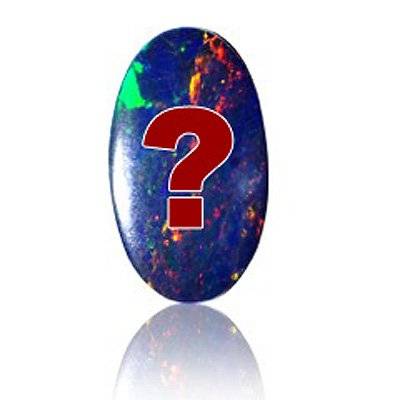
The opal is the national gemstone of Australia. After all, more than 90 percent of the world's opal is mined in Australia and much of this comes from just one state, South Australia. It is also found in Queensland and New South Wales. Black opals from New South Wales' Lightening Ridge are well known. Unlike most other gemstones, opal is not crystalline, rather it is made from hydrated silica.
Kinds of Opal
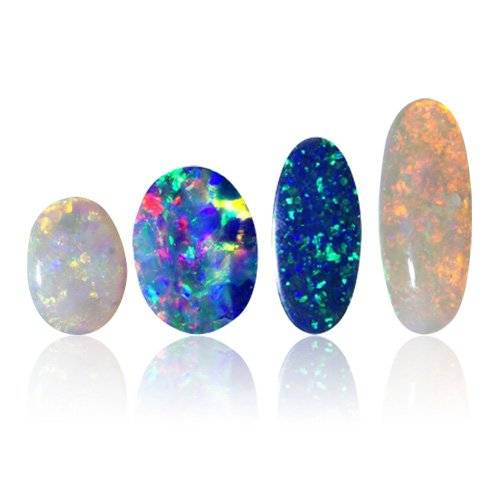
Opal is a notoriously difficult gemstone to mine. Unlike other gemstones, there are no opal veins. Neither does it concentrate like diamonds. Small quantities of opal are scattered over a wide area. Did you know that some varieties of opal are more precious than emeralds and rubies? Here are more details on the different types of opals.
Black Opals
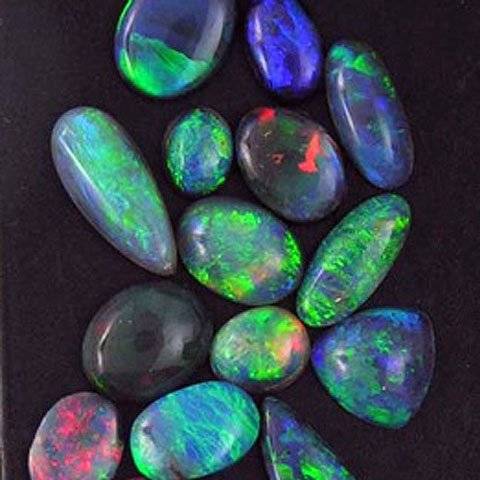
Black opals are the most valued of all opals mined in Australia. The rarity of this particular gem has caused its price to increase dramatically in recent years. After all, most of the world's supply of black opals comes from one small mining town.
What is a Semi-black Opal?

Many first time opal buyers are not sure about what type of opal to buy. They may want to buy a semi-black opal, but may actually be looking at a black opal. Some unscrupulous dealers also try to palm off cheaper light opals as semi-black opals. So is it a sales trick or are there really semi-black opals?
Boulder Opal
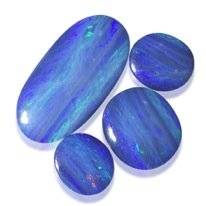
The Australian boulder opal is typically considered the second most valuable kind, after the black opal. Here are a few of its characteristics:
Appearance
The boulder opal is identified by its characteristic solid brown ironstone layer on its back. These opals form in thin colourful veins that run through the cracks and voids within boulders. Opal cutters often need to retain the ironstone layer to form a full sized stone. The stone's innate value is borne out of the way in which it diffracts light exhibiting a brilliant 'play of colour'.
White Opals

The white opal remains less valuable than the black opal or the boulder opal precisely because of its less brilliant play of colours and relative abundance. The white opal is often also referred to in some circles as the 'milky opal'. Here are some of its characteristics:
Crystal Opals
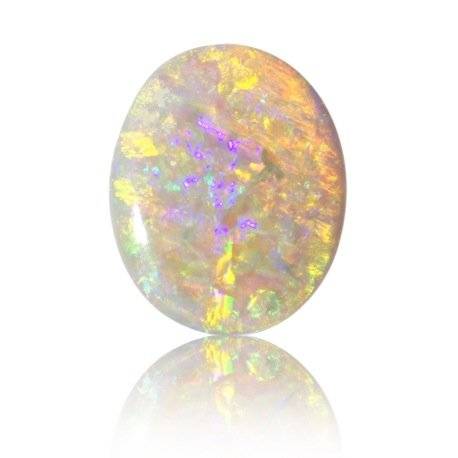
The definition for a crystal opal continues to confuse many professionals, but a stone is generally considered to be a crystal opal if it has any kind of transparent or translucent quality. It is possible for a black opal, white opal or semi-black opal to also be a crystal opal.
Opal Doublets and Triplets

While back opals, white opals and crystal opals are mined in their natural forms, there are also other kinds of opal stones that are man-made. These kinds of stones are known as doublets or triplets. Such stones are of lesser value than natural stones, but may mimic their appearance expertly. A doublet or a triplet is a stone where slices of opal are fixed to a black backing. Attaching these pieces of opal to the black backing, gives the entire stone a darker and more vibrant body tone.
Opal Facts and Myths
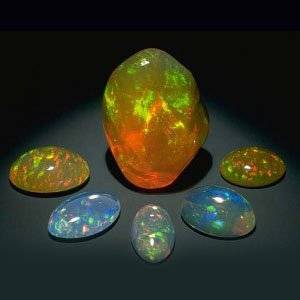
Myth: Opals have to be immersed in water periodically to avoid cracks.
Fact: Australian opal is extremely non-porous, and therefore soaks up no water, oil or any other kind of liquid. The water content that is present within in an opal, is the same as that which was present while the stone was being formed. This means that soaking your opal in water will do nothing to increase its longevity. That being said, it is not advisable to soak a cracked opal as water may enter the crack and jeopardize its structural integrity.
How to Care for Opals
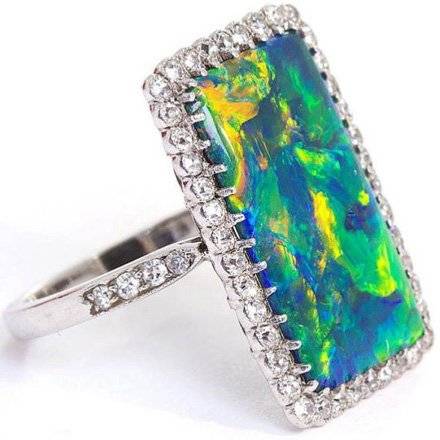
It is first important to understand that there are different kinds of opals, and each of them need to be treated differently:
Doublets
Doublets are made up of two individual layers. The first layer is black backing that is usually made of some black industrial material or black potch (colourless opal). The second layer is a thin slice of opal.
Are Opals Bad Luck?
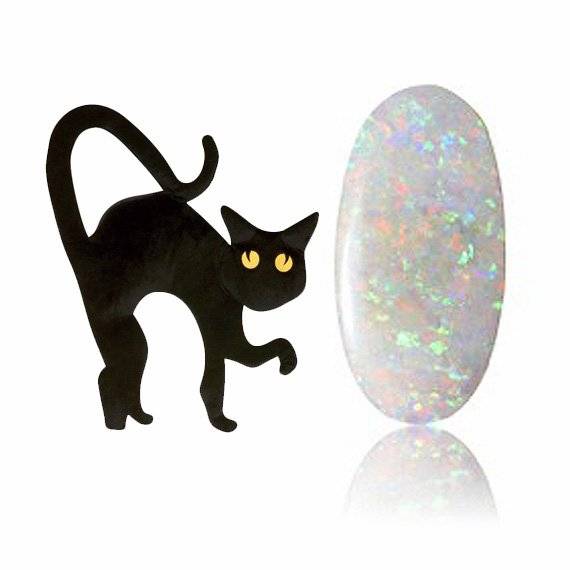
The opal is one of the most controversial gemstones in history. For hundreds of years, the opal has been unfairly berated as a harbinger of bad luck and there are many old wives' tales about its purported evil qualities. But if you ask us, the opal is one of the best and luckiest of gemstones. If they bring bad luck, how do you account for the success we have enjoyed cutting and selling opals for the past 40 years? How do you explain the success of so many opal miners who have made fortunes from these stones and are now living prosperous lives?
How to Buy Opals- A Guide to Buying Opals
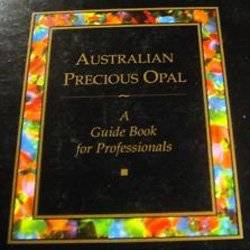
Buying an opal is not an easy job, especially if you do not know much about opals. To make it easy and to help you make the right choice, here is a small guide on how to buy opals.
First, you will have to decide whether you want to buy a solid opal, a doublet opal or a triplet opal. A solid opal, though more expensive, is the real deal and is the best investment. Doublet and triplet opals contain only a thin piece of opal. These are relatively inexpensive and can be easily damaged, sometimes even by immersing in water. There are various kinds of solid opals such as black opals, semi-black opals, light opals, crystal opals and boulder opals. Of these, black opals are the best looking and most expensive.
How is Opal Valued?

Before you buy opals online, you should have a fair idea of how opals are valued. It can help you make an informed choice. It is quite difficult to make out how much an opal is worth, just by looking at the pictures online. An honest dealer will allow you to return an opal or will give you more details on the stone. The opal should have been objectively graded and should come with a certificate of authenticity. Here are a few details on how opals are valued.
A Guide to Common Opal Words
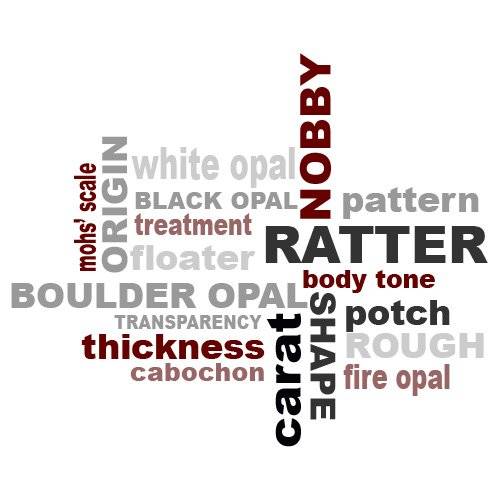
When you are searching for opals on our site, you may come across many unfamiliar terms. For instance, you might be wondering about the difference between a black opal, a semi-black opal and a white opal. You might have even heard words like floaters, noodling or ratters in relation to opals. Here is a brief guide to the most common terms associated with opals:
The Most Famous Opals in the World
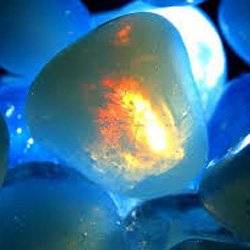
90 percent of the world's opals are mined in Australia. Naturally, a number of large, fine opals have been discovered here. Here are a few more details on the most famous opals in the world.
How to Tell if an Opal is Real
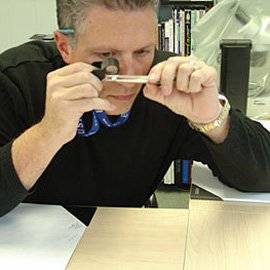
In today's market there are synthetically produced opals known as doublets and triplets. This is why it has become extremely important to understand how to identify whether an opal is real or not.
How is Opal Mined?
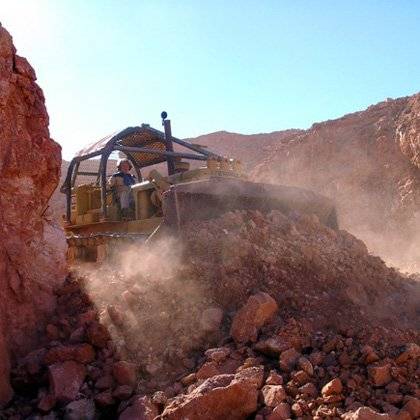
Opal mining in its simplest form can be carried out by a single miner working on his own. A solitary miner digging for opal will use a process known as shaft sinking. This traditional technique involves the use of a shovel and a pick to create a downward shaft. When a miner finds 'opal dirt' located deep within these shafts, the miner will then begin digging sideways in order to determine the 'level' of opal dirt. The sideways digging process may typically involve both picks and small explosive charges. A miner may then use screwdrivers and handpicks to extract opal stones carefully, without causing damage to them.
Australian Opal Mining Fields
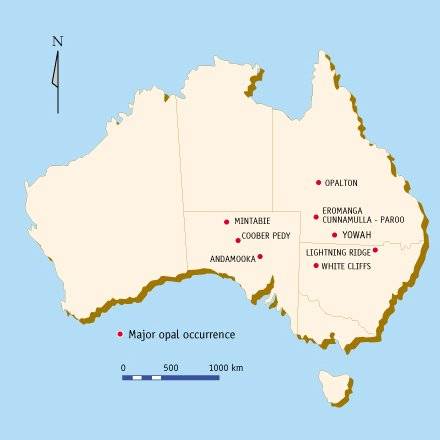
Australia produces 90 percent of all the opal found in the world. Countries like Honduras, Mexico, former Czechoslovakia and Brazil make up for the remainder of opal in the jewellery industry. It is estimated that the Australian export market for opals at the turn of the millennium had a value of $60 million. Between the years of 2000 and 2005, this value rose and varied between $100 and $200 million.
New South Wales Opal Mining Fields
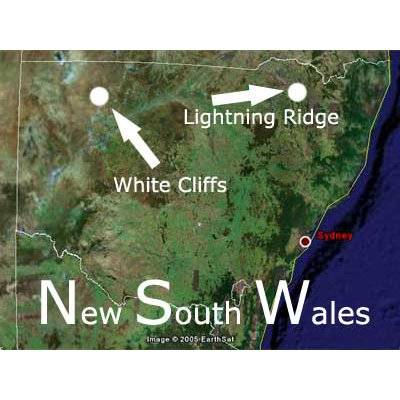
New South Wales produces the most valuable kind of opal available in the jewelery market, thereby making it the most important state in Australia, with regard to opal mining. Places like Lightning Ridge are famous for the black opals they produce. White Cliffs is also known for its seam opal, usually white or crystal in appearance.
Queensland Opal Mining Fields
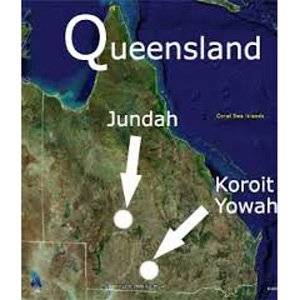
Queensland is famous for the production of the boulder opal. Boulder opals are found in deposits of sedimentary ironstone rock native to the western part of the state. The opal fields in Queensland are located within a belt of Cretaceous sedimentary rock formations known as the Winton Formation that spans approximately 1000km.
South Australian Opal Mining Fields
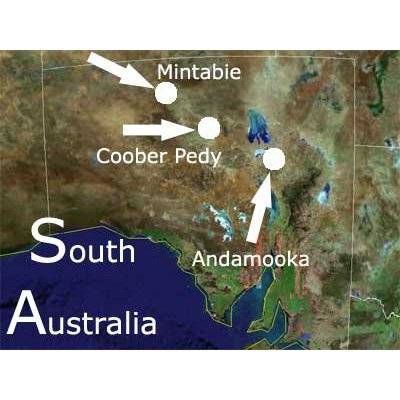
If one was to value opal only by weight, South Australia would be largest producer of opal in the country. The region is particularly famous for the production of white and crystal opals that come from opal fields like Coober Pedy, Andamooka, Mintabie and Lambina.
The History of Opal
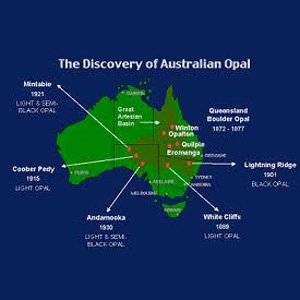
Opal is regarded as one of five precious gemstones in the world, the other four being emerald, ruby, sapphire and diamond. Like a snowflake, each opal is unique.
Opal Engagement Rings - Tips and Ideas
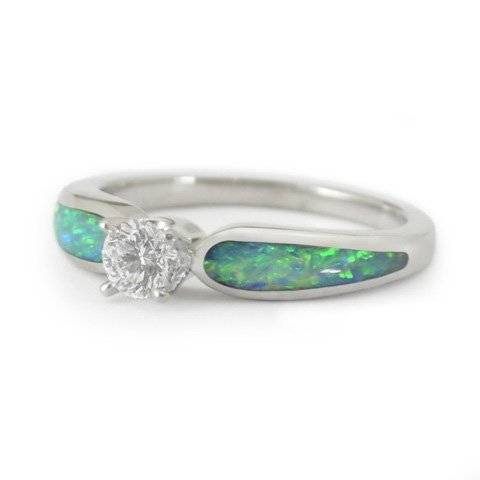
Opal rings are favored as engagement rings as colours bewitchingly appear and disappear to the thrall of the wearer. The gemstone was known from ancient times for its supposedly magical properties.
Opal Rings for Men - Tips and Ideas

Opal rings look great on anyone. Most men prefer the large opal solid. If you want to make a statement, the gemstone to go for is the black opal . However, they carry an aspirational price tag.
A man can also go for an inlaid opal or a doublet or solid opal. The majority of opal rings are set with claw settings which are more suitable for women. Men should preferably go for “rub over” settings that appear spartan, sleek and with minimal feminine touch. An opal ring made for a man could be big and diamonds may also be set adjacent to the opal to multiply the opal's appeal.
How is Opal Formed? - the Geology of Opal
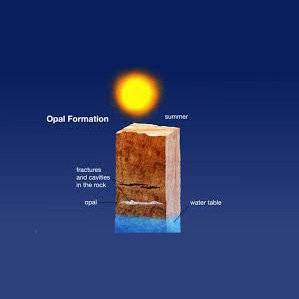
Geological factors linked with the formation of opal are still being researched and are subjects of active discussion among geologists, miners and opal prospectors.
There are three primary models for the formation of opals and although they are independent of each other, a link may exist among them.
Opal Cutting & Polishing - How to Cut and Polish an Opal

A beautiful opal ring setting or necklace is preceded by a lot of time and effort invested in the gemstone. The process involves individuals who specialize in niche skills.
Where Do Opals Get Their Color?

Opals can display all the colours of a rainbow in an iridescent and moving pattern of purple, blue, green, yellow, orange, pink, red and any other colour. This can take a number of captivating forms and this colour movement across the stone face is referred to as “play of colour”.
How Does Our Opal Classification System Work?
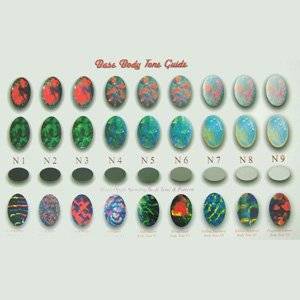
Our classification system is based on the Australian Opal Ebusiness Association (AOEA) Opal Classification Standard, and looks to provide the most detailed information relating to each unique stone, so that you are able to make an informed choice. While there is obviously nothing better than viewing a stone in person, we take care to provide informative videos and photographs that make it easier for our customers to make the right decision.
Black Opal vs. Boulder Opal
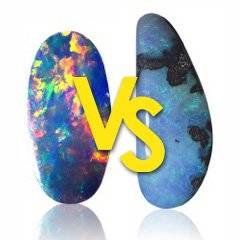
Black opals are typically mined in the Lightning Ridge region in New South Wales. The black opal is mined in shafts and is widely regarded as the most valuable kind of opal. The Boulder opal was first discovered in Quilpie, Western Queensland. This kind of opal is second only to the black opal in terms of value.
Opal Mining Safety on the Opal Fields

Australia produces approximately 90 percent of all the opal in the jewellery market, with Lightning Ridge and White Cliffs in New South Wales being the most dominant opal fields. Visitors looking to fossick or 'spec' for an opal field will first be required to gain permission from relevant landowners.
Opal Nomenclature and Classification
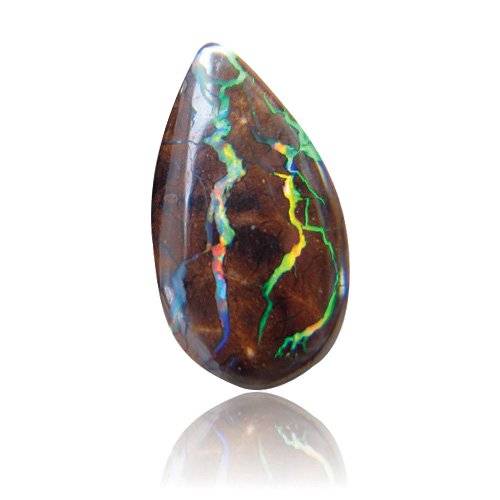
Classification differs depending on the nature of the opal. The following are the requisite details to be associated with each type of opal.
Natural Opal
- Opal Type
- Variety of opal (black opal, dark opal, light opal) based on the AGIA Body Tone Chart
- Diaphaneity or Transparency (in the case of a crystal opal)
- Weight and Dimensions
Opal Fossils
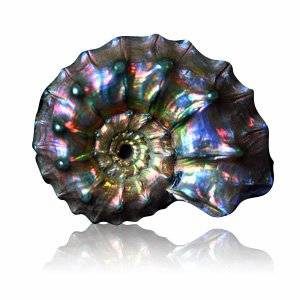
Lightning Ridge - Black Opal Fossils
Lightning Ridge, located in northern New South Wales, is said to be the only place in the world where black opal fossils have been discovered. The region is rife with land-based organism fossils such as pinecones, platypuses and even huge dinosaurs. Fossils that have been found are remnants of plant, shell or bone material and are often made up of quality black opal that is said to be as valuable as a diamond.



